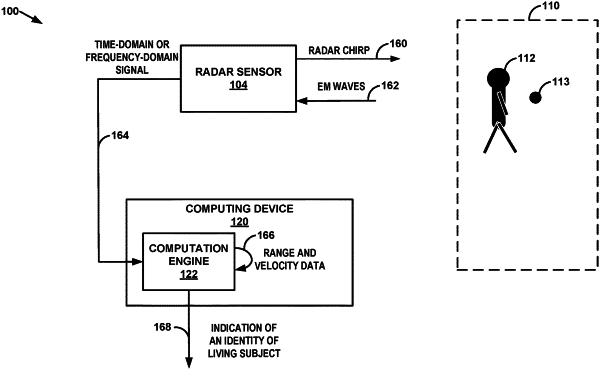| CPC G01S 7/415 (2013.01) [G01S 7/412 (2013.01); G01S 7/417 (2013.01); G01S 13/584 (2013.01)] | 21 Claims |

|
1. An identification system comprising:
a radar sensor configured to generate a time-domain or frequency-domain signal representative of electromagnetic waves reflected from one or more objects within a three-dimensional space over a period of time; and
a computation engine executing on one or more processors and configured to process the time-domain or frequency-domain signal to generate range and velocity data indicating motion of one or more of a head or an arm of a living subject within the three-dimensional space as two or more two-dimensional range-doppler images,
wherein the computation engine is configured to identify, based at least on the two or more two-dimensional range-doppler images indicating the motion of the one or more of the head or the arm of the living subject and on profile data representative of motions of one or more living subjects, biographical data for the living subject and output an indication of an identity of the living subject.
|